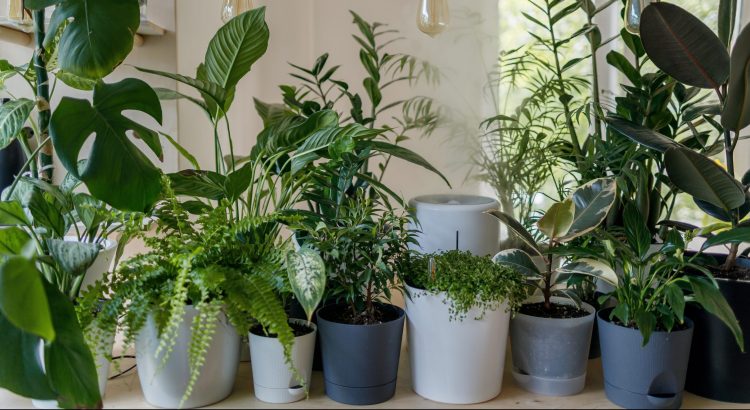Choosing the right low maintenance house plants can be a challenge. But there are several varieties that are very easy to maintain and still look great. Some of these include the Aloe Vera plant, the Rubber tree, the Peace lily, and the Monstera.
Monstera
Known as the ‘Swiss cheese’ plant, the Monstera is an easy to care for houseplant. It grows well in moist, tropical environments and thrives in indirect light. It can also be grown in the ground.
To care for a Monstera, it’s important to provide it with a lot of water. It should be watered when the top inch of soil feels dry. You should also spray the leaves with water every day.
As with most plants, you should rotate your Monstera periodically. You can also clip its aerial roots to make it look more attractive.
You can train a Monstera to grow vertically by tying moss sticks to its growth. You can also put a trellis in its soil.
It is also possible to grow the Monstera in a container. You should choose a terra-cotta or clay pot with drainage. You should also use a porous soil mix.
Rubber tree
Known as the “rubber tree”, this evergreen tropical is a cousin to the fiddle-leaf fig. The Rubber Plant is a low-maintenance houseplant that adds a great focal point to any room.
The Rubber Plant has thick, oval-shaped leaves. The leaves range from 5 to 12 inches long. They are usually dark green with red midribs, though they may be variegated.
The Rubber Plant has a high transpiration rate, which increases the humidity of the room. They also score well against pests and diseases. During the winter, the plant should be shielded from cold drafts.
The Rubber Plant is a fast grower, able to reach heights of over 100 feet in sub-tropical climates. However, the growth rate can slow down over time.
If you have a rubber tree in your home, you should watch it closely for signs of drooping foliage. This will indicate that the plant needs more water.
Snake plant
Despite its name, the Snake Plant is one of the easiest houseplants to care for. It is easy to propagate, has minimal fertilizer requirements, and is also quite hardy. With its broad leaves and swaying branches, the Snake Plant is a wonderful addition to any home.
It can thrive in a wide range of conditions. It will grow best in a sunny location, but it is also able to do well in low light. It can tolerate dry air, so long as the humidity level is not too high.
It is a good idea to repot the Snake Plant at least once a year. This will help improve drainage, and will keep the roots from rotting. It will also help the plant to grow faster, as new growth will be boosted by the increasing exposure to light.
Peace lily
Typically referred to as a houseplant, the Peace Lily is a beautiful plant that thrives in indirect light and a warm room. Its foliage, though large, is easy to care for and requires little attention.
The best place to grow the Peace Lily is in a window with bright, indirect light. Alternatively, it can be left outdoors in a shady spot during the summer, but be sure to bring it in before the weather begins to turn cold. The Peace Lily is also very sensitive to cold, so be sure to take it inside before the temperatures drop.
This plant is also susceptible to common plant pests, such as spider mites. Insecticidal soap, applied to the plant, can help rid it of these troublemakers. You can also use distilled water to increase the effectiveness of the solution.
Aloe Vera
Amongst all the house plants, Aloe Vera is one of the easiest to care for. It is a succulent plant that is durable, and can withstand droughts and dry conditions. It is also a very fast grower. In fact, the plant can grow up to a metre wide in its natural environment. The plant is suitable for growing indoors, and its thick, spiky leaves provide comfort to the skin. Its thick, fleshy leaves contain tons of water, and can help relieve sunburn and dry skin.
The plant is easily propagated, and can be separated from the parent plant. This process can be carried out in a number of ways. First, you can propagate your aloe by taking a “baby” and planting it in a small pot.


